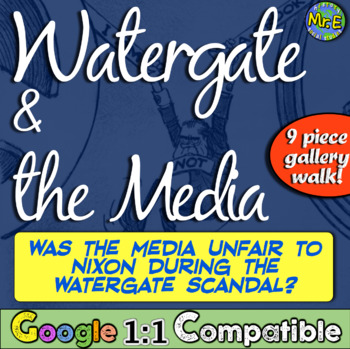Watergate and the Media: How was the Watergate Scandal represented in the media?
- Zip
What educators are saying
Description
In this engaging Watergate and Richard Nixon primary source-based resource, students complete a 9-exhibit gallery walk focused on inferencing and analysis of political cartoons, video clips, and newspaper clippings to understand how the Watergate Scandal was portrayed in the media. Then, students evaluate whether President Nixon was treated fairly by the media given their understanding of the Watergate Scandal.
** This resource is included in my Modern America Unit located here!
Students examine a variety of political cartoons, video clips, and newspaper headlines to understand how Nixon (and his administration) were portrayed in popular media. Use this resource to improve student analysis of political cartoons, highlight how presidents are often the subject of scrutiny, and the importance of having a free press. If you need a teach the background of Watergate, check out my easy-to-use guided notes lesson here!
This resource includes an engaging student organizer, class prompt, an answer key, and a full Google 1:1 version!





